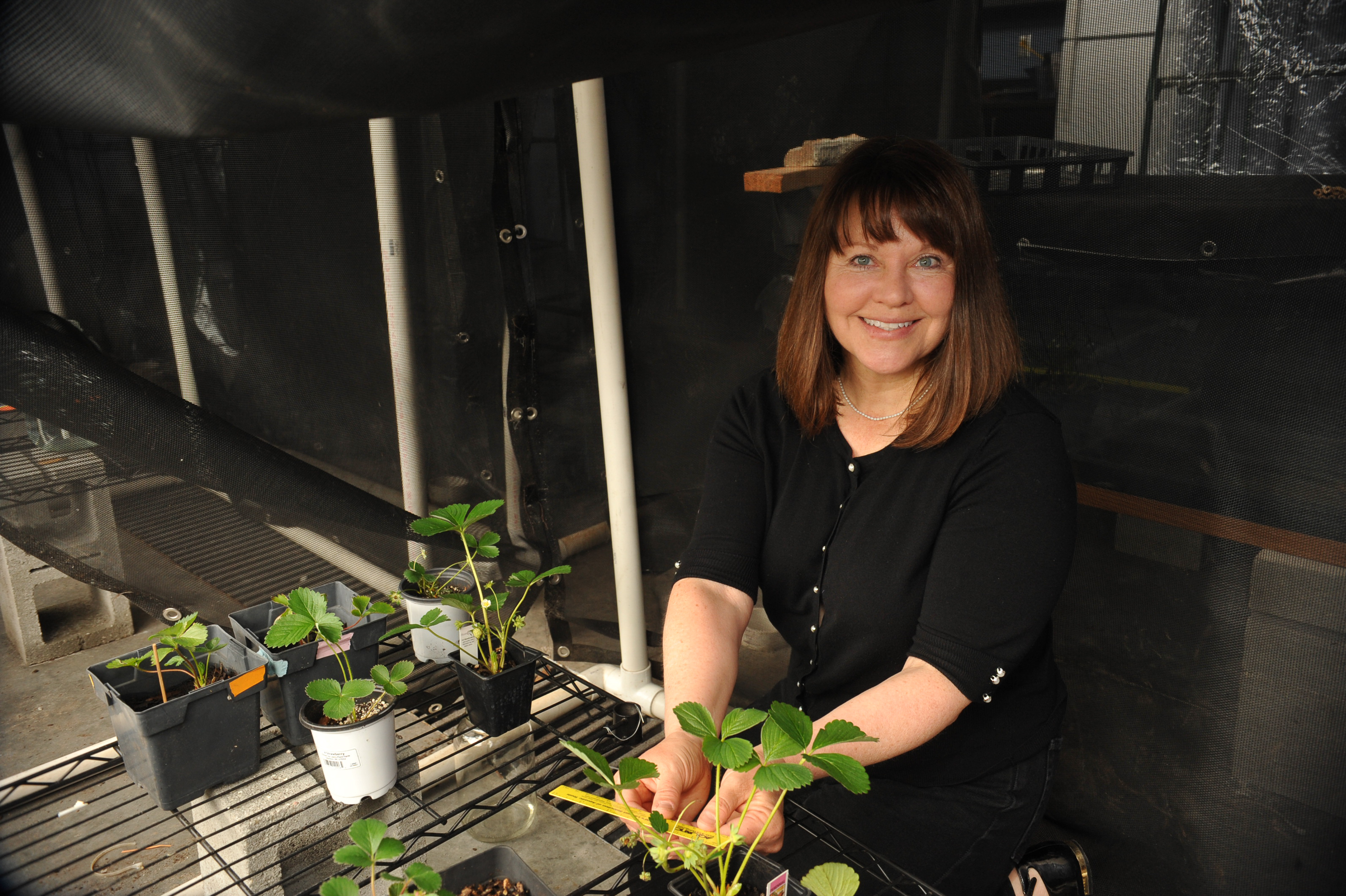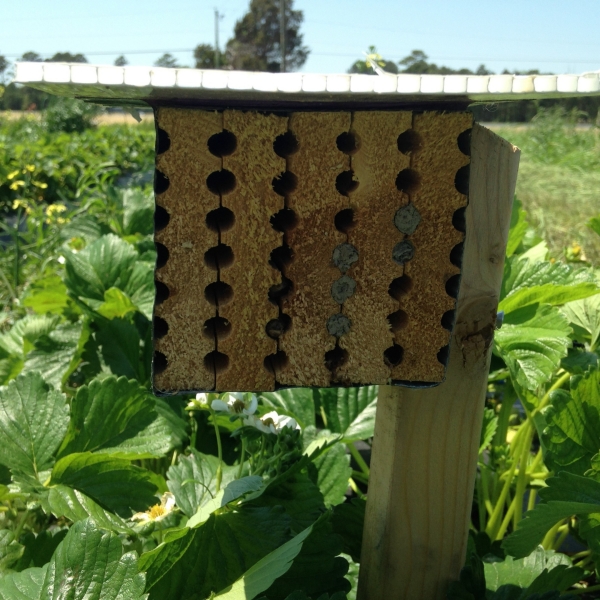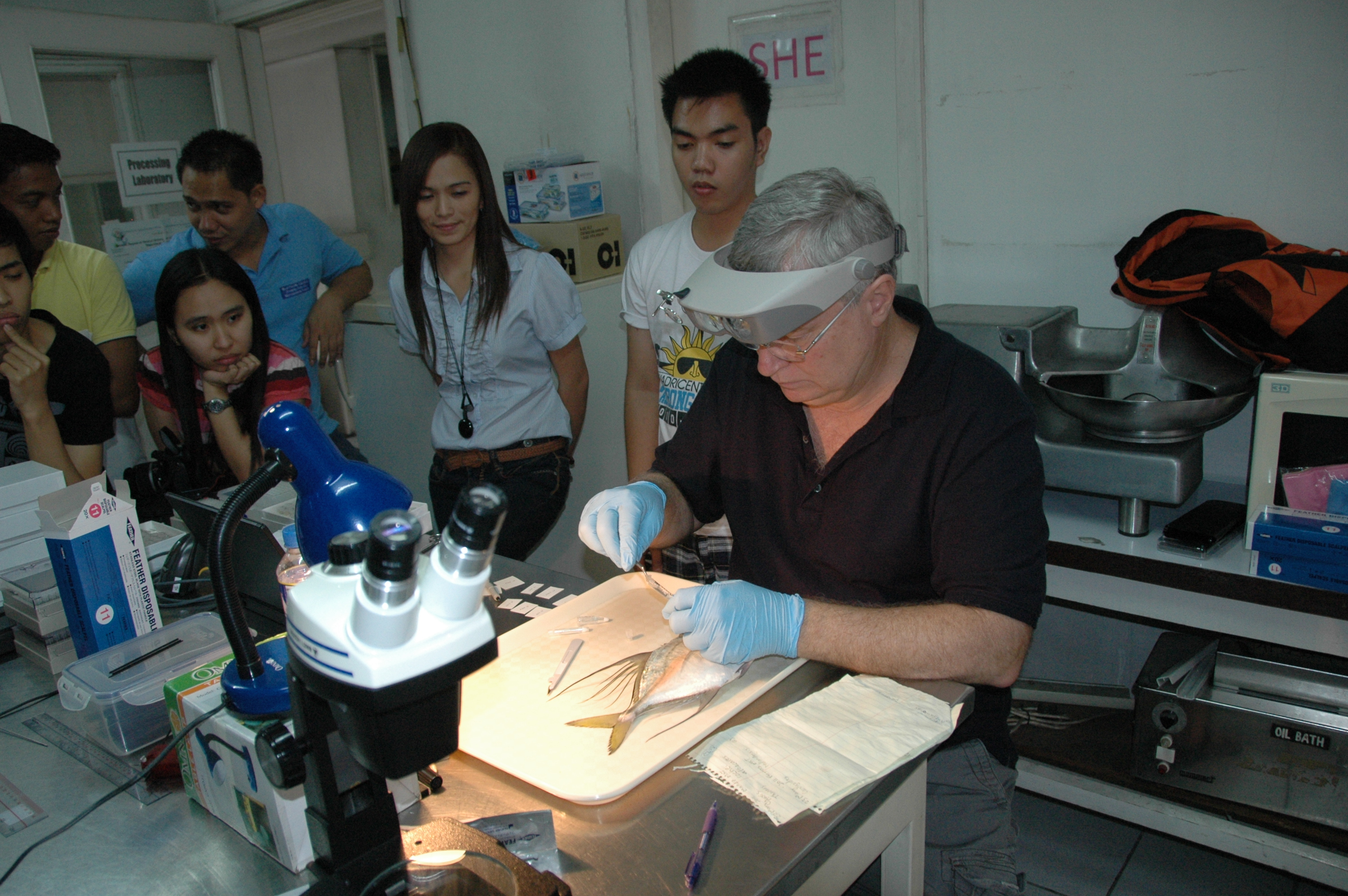Bee Researcher’s Groundbreaking Work Featured in British Ecological Society Journal
September 14, 2017
 Lisa Horth
Lisa Horth
 A Mason Bee hive at one of Lisa Horth's research sites
A Mason Bee hive at one of Lisa Horth's research sites
Lisa Horth, an associate professor of biology at Old Dominion University has conducted vital research on Mason Bees over the past five years showing how their presence in strawberry fields produces larger, more succulent crops.
Now that research has been published in a Journal of Applied Ecology article entitled "Supplementing Small Farms with Native Mason Bees Increase Strawberry Size and Growth Rate." The peer-reviewed scientific journal is a highly respected academic resource for research in all areas of environmental management.
Horth and her students are working to find solutions to a global agricultural problem.
"In short, the question is, 'how do we sustain our food supply?,'" Horth said. "There are two major problems. First, the health of our major agricultural pollinator, the honey bee, is poor. Second, the use of pollinator-dependent crops is rising across the globe at a rate that exceeds growth in the number of honey bee colonies available for farm pollination services."
Major crops eaten by humans around the world are largely dependent upon insects for the pollination that's required for the production of fruits, seeds, oils and more. Most agricultural insect pollination occurs through the use of honey bees placed on farmland by beekeepers. Citing published studies by other researchers, Horth said, globally, the value of such pollination services is close to $200 billion. Crops that require pollination by insects (mostly bees) have much greater economic value than those that do not require insect pollination.
Honey bees are responsible for $15 billion of crop pollination in North America, annually, research has shown. However, honey bees have been experiencing a high rate of disease and death. Mass colony die offs, resulting from an unknown cause, and termed Colony Collapse Disorder, have gravely impacted U.S. honey bee populations as well as honey bees in some other geographic regions around the world.
Pesticides and disease have been identified as potential contributors to these die-offs, where worker bees flee the hive leaving behind the queen and immature bees who cannot sustain the hive by themselves.
"Our reliance on western honey bees for agricultural pollination in the U.S. is interesting given that we initiated this system with imported bees. Western honey bees are not native to the U.S.," Horth said.
This is where her work comes into play. Horth's research team has been studying the large-scale impact of native bees on family-owned farms in the Pungo area of Virginia Beach.
"I am very grateful to the farmers who have been patient and helpful while these studies were underway on their farms," she said.
Mason bees are native to North America, and emerge earlier in the spring than many other bee species. Strawberries are an early spring crop. Horth's team studied the impact of adding mason bees to half of each of several farms strawberry plots. The other half of the berry plots served as a control, where no bees were added.
Mason bees have a small flight radius so it could be expected that they would not often be found on the control side of the berry plots, if at all, which is precisely what the researchers found, Horth said. Meanwhile, the bees were busy on the treatment side of the farms where they were added as cocoons in late winter and emerged as adult bees in early spring.
The team determined that the addition of mason bees increased berry growth rates on the treatment side of the farm where they were added, but not on the control side of the farm.
Horth concludes: "This work contributes to the rapidly emerging conclusion that native bees may serve as very valuable pollinators of crops, when given the opportunity."
Currently, Horth's students Amanda Norbie, Mollie McGee and Charlie Whitestone are evaluating disease in farm bees, assessing the impact of various factors on emergence of bees from cocoons and conducting surveys to assess native bee diversity in wetlands.




